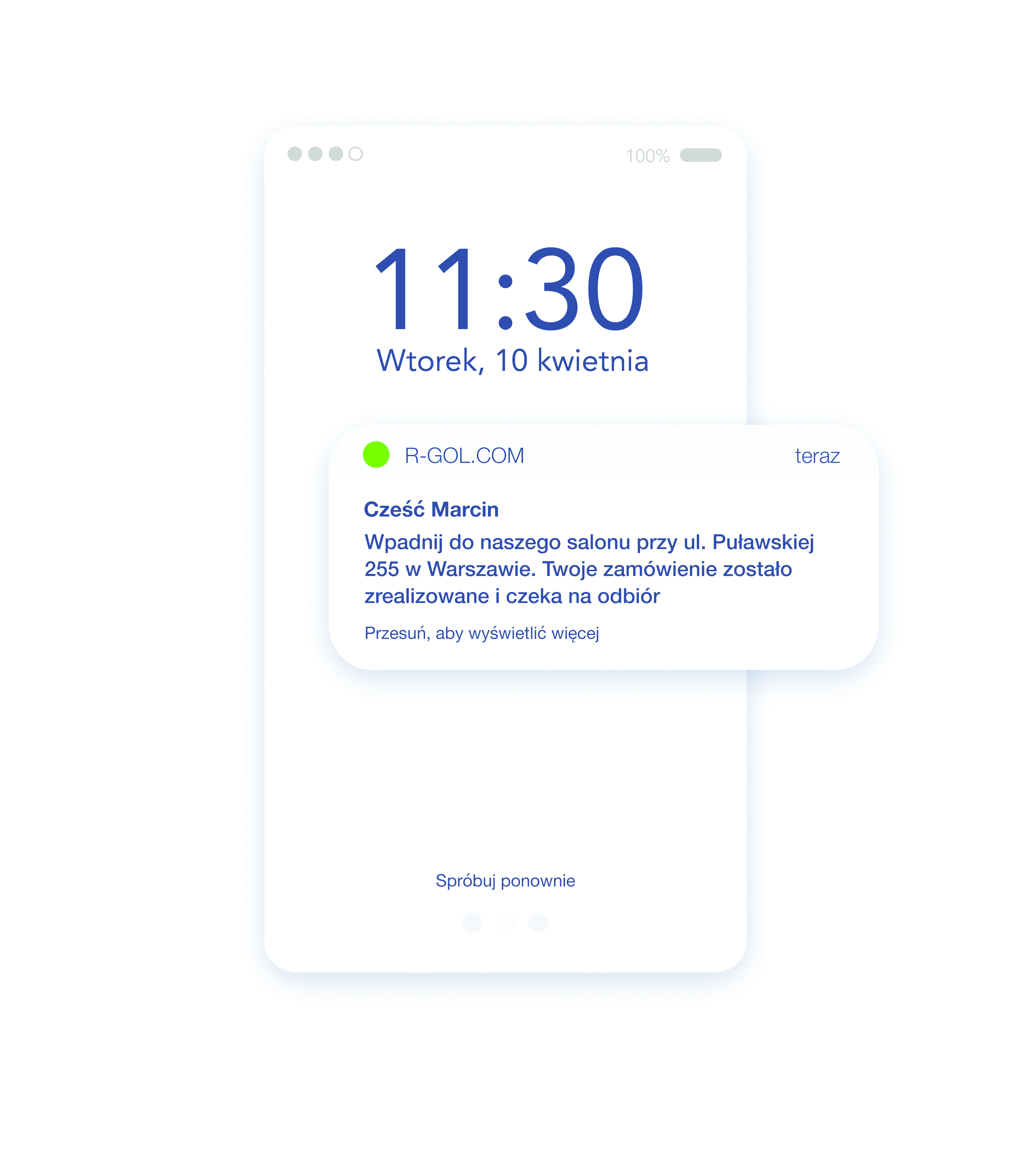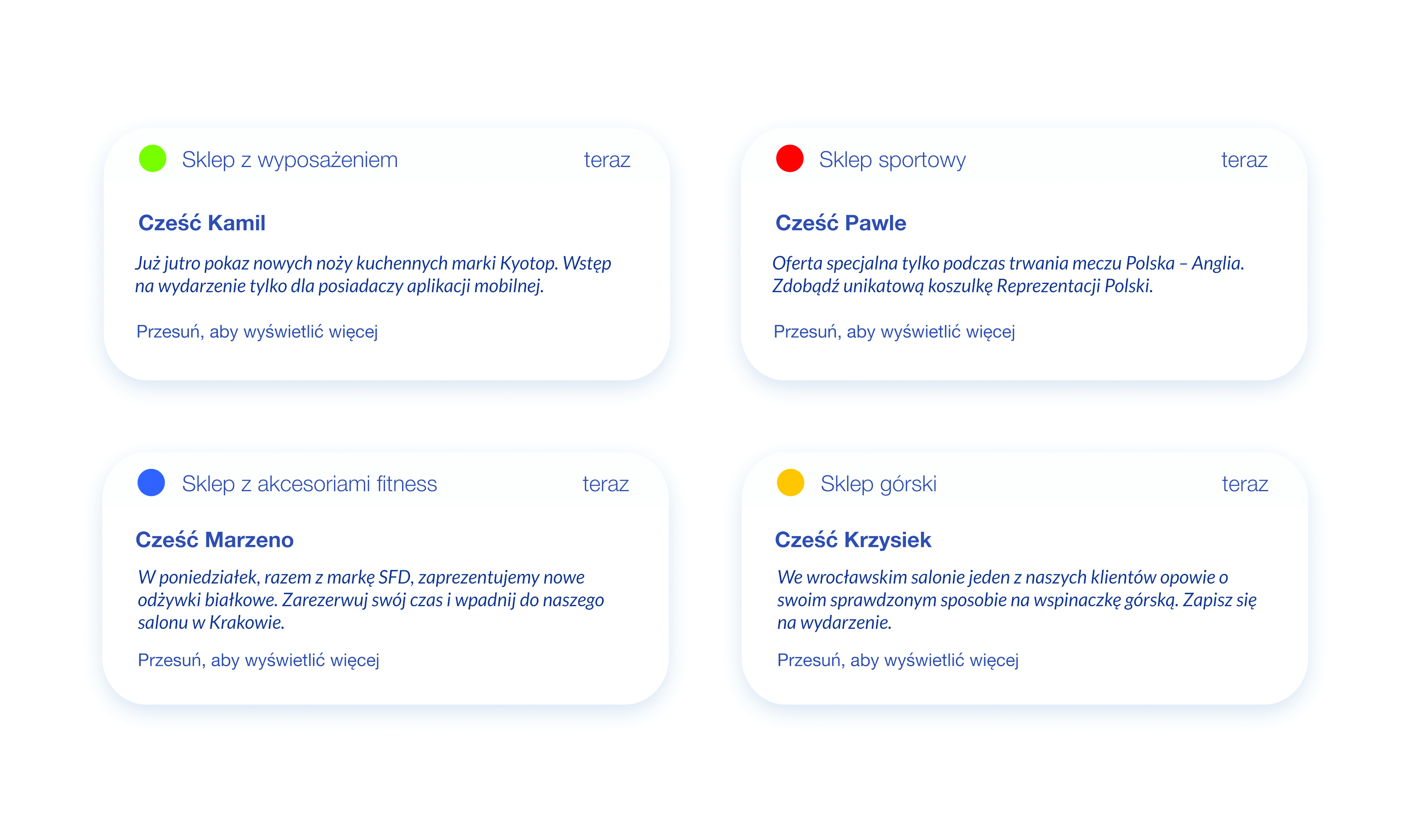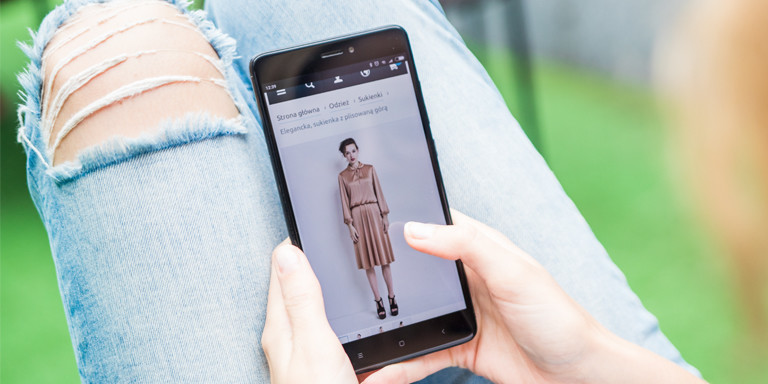In 2018, the omnichannel strategy seems to be the standard. All major brands having a chain of offline stores have merged online and offline sales to some degree. But except for combining IT systems, can we combine customer experience as well? Strong yes! And this is the role the mobile application should play for an online store.
Why didn’t it work out the first time?
The market boom for e-commerce mobile applications took place several years ago. However, the technology couldn’t keep up with the ideas. Applications for online stores were very simple. They were limited practically to the possibility of checking the products of a given brand and only sometimes there was an option to place an order or use a discount. However, the biggest disadvantage of mobile applications was the lack of a permanent connection with the sales system.
The applications were just layers to the system, with no real connection to it. Most of them didn’t have any processes of constant and automatic updating of information about products, availability or discounts in the online store. Working on the update itself was time-consuming and eventually, the brands stopped doing it. As a result, after the first installation, most customers stopped using apps. The website, along with its responsive design, has fulfilled the customers’ needs for mobile online shopping for the next few years.
Currently, the purchase process requires the presence of the company and its products in several sales channels. In order for the mobile application to be part of a multi-channel strategy (omnichannel) and to fulfil its role, it must always be up-to-date. This can be ensured by full integration with the brand’s e-commerce system. Therefore, the whole sales process, for both the online store and the mobile app takes place in one administration panel, which makes it much easier.
Available solutions and their capabilities
There are several types of mobile applications available on the market, such as native and hybrid. Hybrid solutions allow you to instantly create apps for two operating systems at the same time. IONIC is an interesting tool for creating hybrid applications. This rich framework uses the power of the native functions of the mobile device, such as: camera, microphone, location services or TouchID, and a blend of web technologies. On the other hand, the Cordova tool is responsible for the native part. Angular, HTML or SCSS are used in the case of IONIC. This framework allows you to create mobile applications for Android and iOS operating systems. IONIC has a huge database of components, allowing you to create advanced mobile solutions
Modern applications have many solutions that influence the creation and development of omnichannel strategies as well as sales. The most important of them include:
– checking the product availability in offline stores with a mobile app; more and more people check the product online; however, once they know what they want to buy, they do it offline; a good solution is to enable customers to check the product availability in the given offline store;
– checking the product availability in the online store while shopping offline; very often omnichannel is defined as the permeation of the internet world into the world of offline sales; however, the mobile application can extend these possibilities, for example when it’s equipped with the barcode scanner. functionality works when the customer in an offline salon, wants to read more information about the product himself or wants to order a different variant (color, size, model – depending on the product); then the only thing he has to do is to scan the barcode and the application itself will transfer him to the specific product in the online store; such a solution is also in line with the currently popular self-service model used by the younger generation. Then the mobile application acts as an additional store employee, thanks to which the customer can receive the necessary information about the product;
– push notifications. There is a significant difference between push notifications and text messages. According to research, they are much more often read and they encourage better interaction. Through integration with the e-commerce system, they can contain information about the status of the order, the status of the complaint or specifically tailored offers to the user.

Custom ideas
There are other possibilities to use mobile app. Shop service can identify customers in individual places of a salon. In this vision, you just need to implement beacons. They will show the approximate location of the customer, as well as other data, e.g. the history of shopping in the online store, so that they can be used by store employees to build offers in real time. For example: when the client passes the shoes, the mobile application via beacon registers his presence, the e-commerce system checks if the client has recently browsed the product on the internet, and finally displays a special offer on the TV screen in the salon.

The second option will benefit mainly customers. Retailers will be able to send personalized messages to them regarding special offers, discounts or events. Sending such messages will be possible only after the client agrees to analyze its purchases, preferences or locations. This solution will definitely not suit 100% of customers, but those who will agree and will demonstrate a large purchase commitment – may become natural brand ambassadors. Such a solution will also increase the involvement of the communities – clients or trade partners of the specific brand. In result, this system will be able to link different components of our client’s purchasing process in cause and effect way: from products, through history, to the location. For example: we can send information about the discount for an associated product with an earlier purchase, available only in the salon which the customer visits most often – that means we combine sales, e-commerce, mobile phones and location.

However, it should be remembered that such data analysis requires a client’s declared consent. For this purpose, the mobile application must clearly indicate such intention. Therefore, the role of the brand is to show the client a number of benefits of expressing such consent.
The mobile application for online stores has gone a long way. The first versions were too simple, then the brands didn’t have an idea for its full use. Now all components of the new omnichannel dimension are available. All you need is a decision of retail chains and a person who would implement it in the retail world.
The article was originally published in Magazyn E-commerce, 2(2)2018.
 Polski
Polski  Deutsch
Deutsch 

